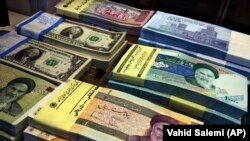Iran’s currency continued its recent downward trend on Thursday, falling to 144,800 rials against the U.S. dollar, one day before scheduled parliamentary elections on Friday and a decision by an international financial watchdog to impose counter-measures against the country.
In the past two months the Iranian currency, already battered by U.S. economic sanctions has fallen another ten percent against major currencies, due to diplomatic impasse in Iran’s relations with the West and serious internal unrest.
In November, four days of unprecedented unrest gripped Iran, as the government suddenly raised gasoline prices to boost its coffers. To suppress the widespread revolt by mostly young protesters, the government resorted to firing at people who had come out into the streets, killing hundreds.
Earlier, the Central Bank of Iran had set 140,000 rials to the dollar as a “red line”, meaning it would take up measures to control the fall of the rial if it went below that threshold.
The daily newspaper Iran Thursday quoted currency traders saying the main reason for this week’s decline in the value of rial is anticipation that the Financial Action Task Force (FATF), an inter-governmental watchdog in Paris will put Iran under full banking penalties after Tehran has failed to ratify a series of laws to combat money laundering and terror financing.
The Iranian parliament has ratified laws to satisfy FATF’s demands but the country’s hardliners allied with Supreme Leader Ali Khamenei, who must put their final seal of approval on all legislation have refused to do so.





